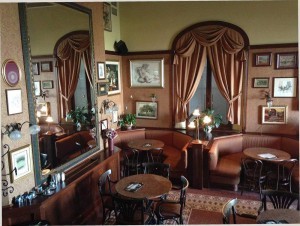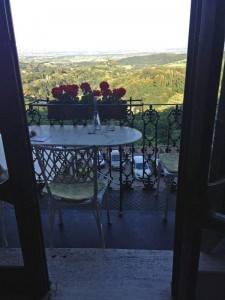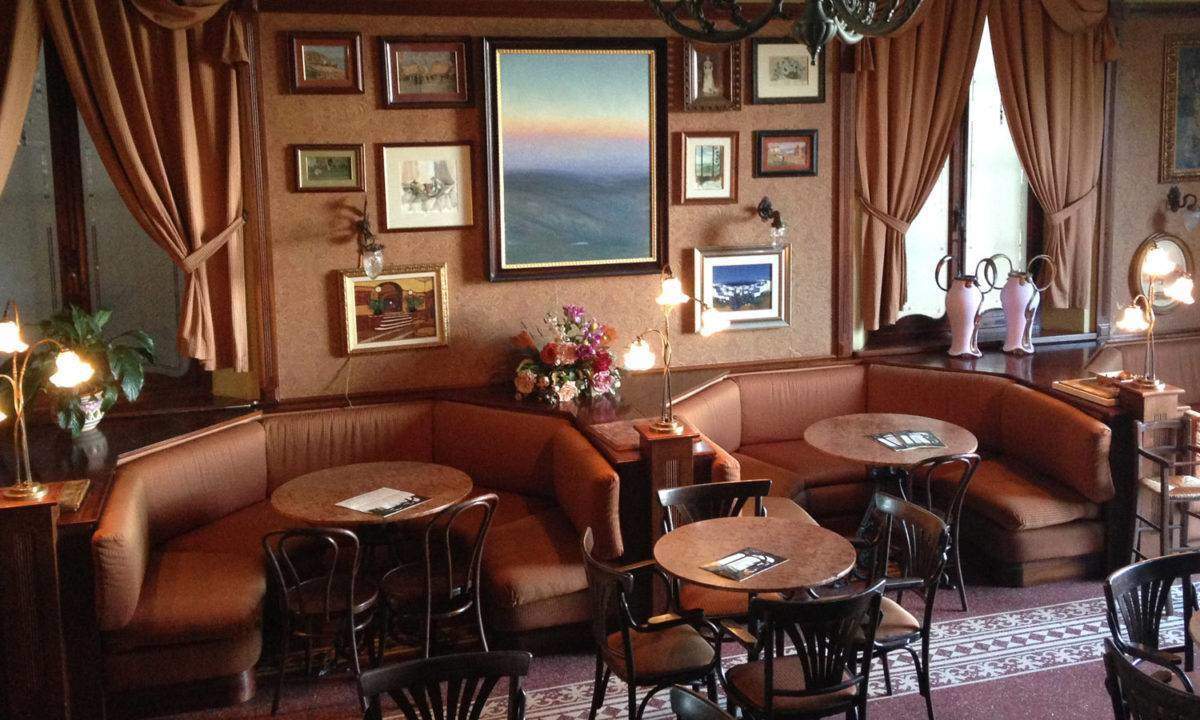We’d been floating around Tuscany for a few days and, honestly, chose the town of Montepulciano as our next stop based merely on the obvious fact that it had given its name to the famous Italian wine. You need something to go on when navigating Tuscany, because no choice is a wrong one, every village is as intriguing as the last, a medieval collection of sturdy stone and stucco buildings, arranged around cobblestone streets, perched dramatically atop a hill. The hill once was chosen for its strategic location, but today it mostly means you’ll find some breath-stealing views when you get to the town and that you want to arrive on, or in, a vehicle powered by a motor.
Montepulciano was bigger than Volterra, the town we’d just left. Where the latter is known for its alabaster (we came home with a salt dish made of it, crafted right in town), the former boasts a long history of producing wonderful food, although its most famous for its wine. We toured a winery right in the village that’s been in operation for centuries, its cellars lodged into the hill beneath the streets, no need for temperature control because the coolness in them never budges. The industries vary from town to town, is what I’m saying.


This translated into languorous mornings and wandering afternoons, on one of which, on the later side, we decided to stop into Caffe Poliziano for a drink and snack. I’d read about it earlier. Originally opened in 1868, Caffee Poliziano went through some iterations, some fluctuations success-wise, then was restored not to its original look but to its 1920s grandeur, in 1992.
The juxtaposition of this art nouveau gem with the rest of Tuscany was marvelous. The aesthetic dissonance upon entering the café had the immediate effect of making one feel like she’d stepped through a hidden door behind a bookcase, out of one wonderland and into another. Medieval on the outside, Lost Generation Left Bank on the inside, only more primeval.
I don’t normally love the color pink, but there’s a particular muted shade that’s suggestive of things that pink usually isn’t. This café was swathed in it, a shade that on its own, even without context, evokes the roaring twenties. It provided the backdrop, to elaborately curtained windows, gallery walls, faded wallpaper, a huge mirror on the wall just because, ceiling lamps that could have worked as streetlamps, once, when street lamps were beautiful. It’s a place full of details that work together to achieve a cohesive whole.


To understand the drama of these terrace tables, it’s necessary to further explain the structure of Tuscany towns. Like most Tuscan villages, it sits atop a steep hill. Its 14th century walls contain the car-free streets still today. Sitting at those tables did not mean looking down at the drop to the street, but down hundreds and hundreds of feet to where the hill meets the fields. It’s the kind of place where you sit there with your companion, throwing each other where-are-we looks, oblivious to the drinks themselves, which if I recall, were fine, in that old fashioned way in which things taste a little sweeter than you may normally prefer them. Or maybe that’s just Italy, even though this particular experience was a step removed, in both time and place.
Caffe Poliziano
Via Voltaia del Corso, 27/29
53045 Montepulciano (SI) Italy




